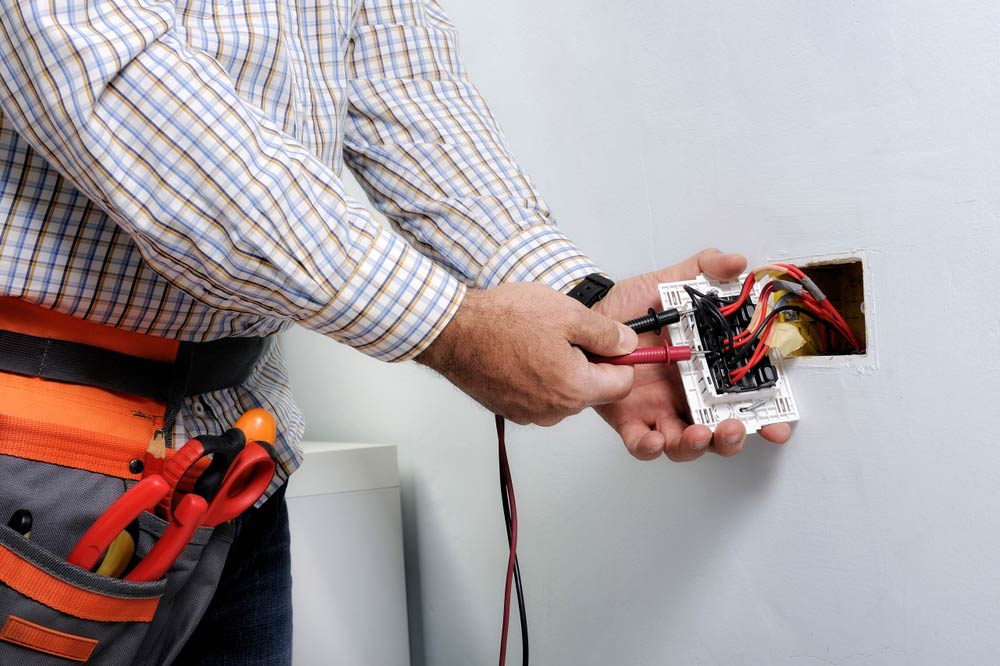Debunking Electrical Setup: Understanding Codes and Laws for a Legal and Safe Setup
In the world of electric installation, adherence to codes and laws is vital to ensure both legitimacy and safety and security. The trip to debunking electrical setup goes beyond simple knowledge with regulations; it necessitates a profound grasp of just how to implement secure electric methods efficiently.
Importance of Electrical Codes
The adherence to electrical codes is critical in making certain the safety and integrity of electrical installments. Electrical codes function as a collection of requirements and standards that dictate the correct design, installation, and maintenance of electrical systems. These codes are established to lessen the danger of electric hazards, fires, and other safety and security issues that may emerge from faulty electrical work.

Furthermore, electrical codes are regularly updated to incorporate brand-new technologies, ideal techniques, and precaution. Remaining updated with these codes is crucial for experts in the electrical industry to guarantee that their work meets the most up to date safety and security standards. Eventually, the significance of electrical codes hinges on producing a protected and efficient electric infrastructure that profits both people and neighborhoods.
Trick Laws for Security
A number of fundamental policies control the safety standards in electrical setups. One vital regulation is the National Electric Code (NEC), which supplies standards for secure electrical design, installment, and evaluation to protect individuals and building from electric dangers. The NEC covers aspects such as wiring methods, grounding, overcurrent security, and tools setup to guarantee a secure electric system.
An additional important regulation is the Occupational Safety and Wellness Administration (OSHA) standards, which concentrate on the safety of workers associated with electrical setups (BRE Services). OSHA laws consist of needs for correct training, safety treatments, and personal protective equipment to avoid workplace mishaps and injuries
Furthermore, the International Electrotechnical Payment (IEC) requirements aim to harmonize electrical installation policies on a worldwide scale. These criteria address problems like electric devices safety and security, electro-magnetic compatibility, and power effectiveness to advertise uniformity and security in electrical installations worldwide.
Conformity with these vital regulations is important to make sure the safety and security and legality of electric installments, shielding both individuals and residential property from the risks connected with electrical power.
Recognizing National Electric Code
Secret policies such as the National Electric Code (NEC) provide crucial standards for safe electrical design, BRE Automation Australia installment, and inspection to ensure the protection of people and residential or commercial property from electric threats. The NEC, additionally referred to as NFPA 70, is a comprehensive collection of requirements for electric setups that are upgraded every 3 years. It is created by the National Fire Security Association (NFPA) and is widely adopted throughout the USA.
The NEC covers different aspects of electrical work, consisting of wiring approaches, grounding, overcurrent defense, and equipment setup. It intends to protect people and home by attending to prospective risks related to electric systems. Conformity with the NEC is generally enforced by local authorities having territory (AHJs), such as building code officials and examiners.
Understanding the NEC is critical for electric contractors, designers, and examiners to guarantee that setups fulfill the required safety and security requirements. By sticking to the NEC standards, specialists can assist protect against electrical mishaps and make sure the reliability of electrical systems in residential, business, and commercial setups.

Compliance With Local Building Regulations
Comprehending and adhering to regional building codes is essential for making certain the safety and conformity of electric setups within a details territory. These codes lay out certain requirements for electrical installments, such as the kind of wiring to be used, positioning of electrical outlets, grounding approaches, and lots capabilities.
When it comes to electric installments, failing to follow local building codes can cause serious repercussions. Non-compliant installments may pose security hazards, raise the danger of electric fires, and bring about expensive penalties or lawful concerns. In addition, insurance provider might reject to cover problems arising from setups that do not meet regional building code requirements. It is critical for electrical contractors and service providers to stay informed about and purely adhere to the regional building codes appropriate to their tasks.
Making Sure Safe Electrical Practices
Exercising stringent adherence to established safety procedures is critical in the area of electrical installments to reduce possible threats and ensure the wellness of people and homes. Safety and security in electrical job incorporates numerous aspects, beginning with the appropriate training of workers included in setup, maintenance, and repair. By focusing on risk-free techniques, electrical installations can function efficiently while minimizing the chance of accidents or damage.
Conclusion
Finally, adherence to electric codes and policies is essential for guaranteeing the security and legitimacy of electrical installations. Understanding the National Electric Code and compliance with local building codes are important for a safe arrangement. By adhering to these standards and practicing risk-free electric practices, people can protect against possible dangers and guarantee the proper performance of their electrical systems.